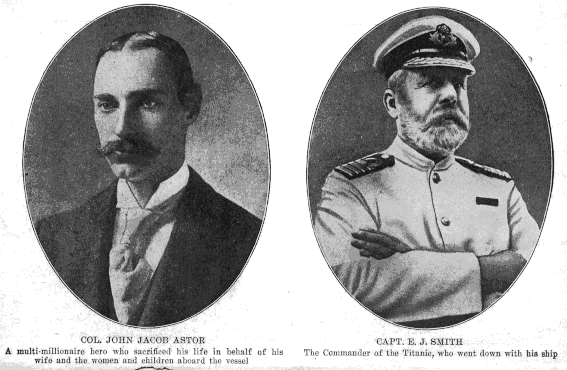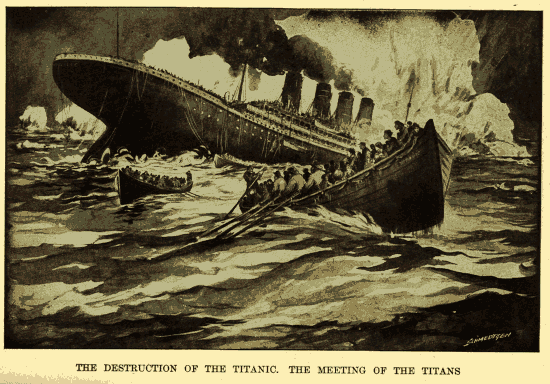Today, a parable about scientific reporting. The University of Houston's College of Engineering presents this series about the machines that make our civilization run, and the people whose ingenuity created them.
Here's a fine lesson in scientific objectivity. It's an old book about the Titanic. Experimental science is the business of sorting out the things we see. This book is dated May 13, 1912. That's a scant 33 days after the Titanic sank. Someone has really raced into print to sort out this event. The subtitle is,
A Graphic and Thrilling Account of the Sinking of the greatest Floating Palace ever built, carrying down to watery graves more than 1,500 souls.
We've read a lot about the Titanic since then. We've found the wreck and reconstructed the accident. Now we know the iceberg didn't tear the hull. Instead, it sprung the plates. Now we know that the rear third of the ship broke off as it cantilevered upward -- lifted by the sinking prow.
For 80 years witnesses have been wrung out and hung up to dry. We've pored over transcripts. We've plumbed the human failings that led to the deaths of two thirds of the people on board.
This book combines photos and data from files with the eye-witness accounts of people whose clothes are hardly dry.
The survivors all praise the heroism that granted them life. History does little to tarnish those stories. Three quarters of the men on board stood back so women and children could use the few lifeboats. Some wives died rather than leave their husbands. How many of us would've acted so nobly?
The book tells and retells the tale of bandsmen playing Nearer my God to Thee with water rising over their knees. Now we know that didn't happen. Frightened survivors who rowed away from screaming people in the water tell how they had to, to keep from being sucked under by the sinking ship. History has not been kind to them in their half-filled lifeboats. And listen to this line:
Captain Smith, indeed, was afraid, but it was only for the precious beings under God committed to his care. And how manfully he minimized the first danger until the rising surges creeping o'er the decks betrayed the awful truth.
How many precious minutes did he lose in manful underestimation!
People in the boats thought they heard boilers exploding as the ship sank. The few who saw it split in two were ignored for years. Who wanted to think the great ship was broken?
People in the boats thought they'd taken twice as many women and children, and half as many men, as they really did. That's the problem of scientific reporting -- trying to say what it is we've really seen.
That fearful night warns how hard that is to do. It reminds us of our own capacity for error. It reminds us that the true business of science is defeating our own terrible capacity for believing what we want to be true -- and not what really is.
I'm John Lienhard, at the University of Houston, where we're interested in the way inventive minds work.
(Theme music)
Wreck and Sinking of the Titanic. (M. Everett, ed.) L.H. Walter, 1912.
Lord, W., A Night to Remember. various publishers from 1955 to 1987. The latest is New York: Amereon House.
Bonsall, T.E., Great Shipwrecks of the 20th Century. New York: Gallery Books, 1988, Chapter 2.
For more on the sinking of the Titanic see Episodes 81 and 941.


Images from Wreck and Sinking of the Titanic, 1912